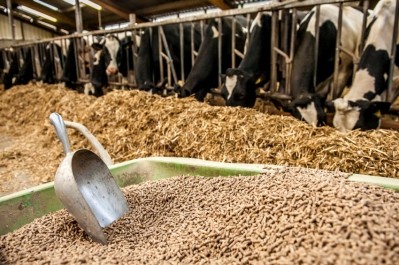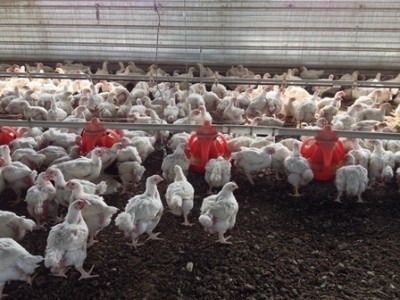Bid to enhance calcium dosing in pig feed for improved protein and phosphorus digestibility

Since 2011, researchers at the University of Illinois, funded by feed ingredient manufacturer AB Vista, have been working on a project to determine calcium digestibility values of a range of common pig feed ingredients.
Dr Carrie Walk, AB Vista’s senior research manager, told us: “The aim is to achieve the same level of precision for calcium when formulating diets as is possible for phosphorus.”
“We formulate using digestibility values for the majority of the important and expensive nutrients in the diet, such as phosphorus and amino acids, but that data is currently not available for calcium in growing pigs,” she said.
Current shortcomings
At present, calcium in pig diets is determined on a total calcium basis, calculated from the calcium content of ingredients.
According to Walk, the problem with this approach is that it doesn’t take into account ‘hidden’ sources of calcium in feed ingredients, differences in calcium digestibility between calcium sources, or the impact of microbial phytase inclusion, which can improve calcium digestibility so less dietary calcium is needed.
“Calcium is used in soybean processing and as a carrier in vitamin or trace mineral pre-mixes, which can result in higher calcium concentrations than you might expect. A producer might formulate with 1% calcium, then analysis might show 1.25% calcium, but because calcium is cheap, nobody bothers. If it was phosphorus, they would,” explained Walk.
However, oversupply of calcium is more of an issue than producers might think.
“Although calcium is a relatively inexpensive nutrient, the implications of oversupply are significant,” said Walk.
“Even marginally high levels of dietary calcium have been shown to increase gastric pH and reduce the digestibility of two of the most expensive nutrients – protein and phosphorus. If, therefore, producers can get closer to the animal’s actual requirement for calcium based on digestible values, this could lead to improvements in phosphorus and protein digestibility,” she explained.
Establishing digestibility values
The initial phase of the project established a TTTD value for calcium in canola meal. The researchers determined digestibility values both with and without the addition of phytase, as phytase use will increase calcium availability, potentially leading to oversupply.
The trials generated average calcium TTTD values for canola meal of 46.6% in a diet untreated with phytase, and 70.3% in a phytase-treated diet, meaning that calcium is more digestible when phytase is added to the diet.
“The advantage of formulating a diet using these values is that they express the amount of calcium that is absorbed and utilized by the animal,” said Walk.
The researchers are planning to generate calcium TTTD values for a range of plant and animal-based feed ingredients: canola meal, casein, potato protein, corn germ, corn starch, corn protein, soybean meal, mono-calcium phosphate, di-calcium phosphate and limestone, in addition to novel sources of calcium - seaweed and sugar beet co-products which contain between 32 and 37% of the nutrient.
The next step will be to establish the requirement for digestible calcium in all groups of pigs.
Ultimately, Walk said these values would be published and possibly input into the National Research Council’s models for estimating the nutrient requirements of pigs so that feed manufacturers could benefit from this knowledge.








